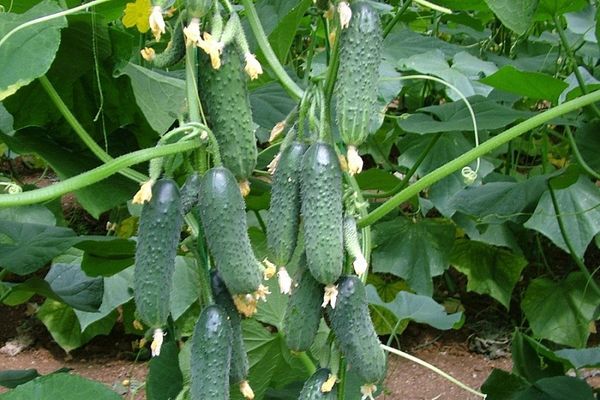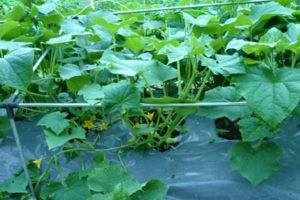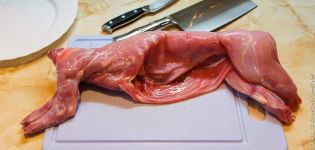Characteristics and description of the temp cucumber variety, its yield
Firm "Semko-Junior" does not let summer residents get bored, annually offering new varieties and hybrids of vegetables, their relatively new hybrid of cucumbers Temp F1 is undoubtedly of interest to amateur vegetable growers.
The author of the cucumber Temp Yu. B. Alekseev. The hybrid has passed all tests, since 2006 it has been listed in the State Register. This variety of cucumbers is grown outdoors in seven regions of the Russian Federation (Srednevolzhsky, Volgo-Vyatsky, Central, North Caucasian, Central Black Earth, North, North-West). In greenhouse conditions, the Temp variety can be grown in any region of the country.
Description
The hybrid is modern, therefore it meets the basic requirements of summer residents. It tolerates changeable weather well. Forms fruits even during a period of prolonged rain, which is not inherent in every variety (hybrid). The description of the variety guarantees a good yield.
When harvesting fruits in the gherkin phase, the yield can reach up to 15 kg per square meter of the ridge. The productivity of the hybrid is 2 times lower if pickles are removed.
Note to the summer resident: the fruit of a cucumber with a size of 6 to 8 cm is referred to as gherkins; specimens from 3 to 5 cm long are called pickles.
Cucumber Temp is an indeterminate type of plants. The scourge does not stop growing until the growth point is removed. The number of leaves and stepchildren on the bushes is average. The work on the formation of the plant is minimal. It is recommended to plant 3 plants per meter. When driving a bush in one stem, a compacted planting with an interval of 30 cm is permissible. Early ripening of fruits should be noted. Pikuli begin to be harvested on day 38, greens and gherkins a little later (40 - 45 days).
The plant has a bunch-type fruiting, from 2 to 5 small cucumbers are tied in a knot. Zelentsy with a diameter of 4 cm in length reach about 10 cm. Average greens weigh about 80 g. The pulp is crispy, tasty, without bitterness and voids. The skin is tender, small tuberous. Spikes are white.

For preparations (canned vegetables), the fruits are recommended to be collected in the phase of pickles or gherkins. Fruits of this size have good marketability and taste, and the workpieces are of high quality.
Advantages and disadvantages
The pace is cucumbers that easily adapt to the vagaries of the weather, they tolerate prolonged rains well, do not reduce the yield. Low susceptibility to infections (cladosporiosis, powdery mildew, TMV) is another valuable quality of the hybrid.
Summer residents from the southern regions of the Russian Federation will like the hybrid with its resistance to heat. Fruits can be set at +50 ° C. The only condition is the presence of abundant and frequent watering. The characteristic of taste is the main advantage of the variety.

Care features
Summer residents can grow a hybrid in two ways:
- seeds (dry, germinated) into the ground;
- seedlings.
Minimal knowledge of agricultural technology allows you to grow viable seedlings, get early cucumbers from your garden. Seedlings can be planted in the greenhouse from mid-April, in open ground later. The earth should warm up (15 ° C), stable warm weather should be established.

Seedlings are grown without picking, seeds are sown directly in containers with a diameter of 7 cm, with a volume of 400 ml or more. Dive cucumbers No pace needed. The age of the seedlings for transplanting into a greenhouse or into the ground is 25 days, the growth is 25 - 30 cm. The seedling must be strong, bright green. Healthy, not overexposed seedlings adapt faster in a permanent place.
Conclusion
Analyzing the responses of summer residents on the forums, one can assess the need to purchase hybrid seeds from Semko-Junior for a new planting season. Almost all reviews about it have a positive assessment, which guarantees a good landing result.








